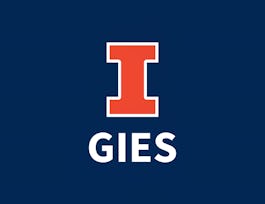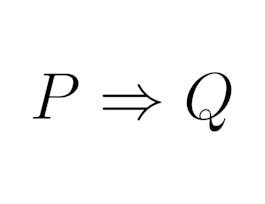Welcome to the Microeconomics course! This course will help you develop an in-depth understanding of the microeconomics principles and market mechanisms. It provides the tools and framework you need to understand the economy at large and decision-making at the individual unit level.



Microeconomics: Foundations and Insights

Instructor: Vatsalya Srivastava
Sponsored by InternMart, Inc
Recommended experience
What you'll learn
Analyze assumptions in economic models and evaluate policy interventions' impact on market outcomes in both perfect and imperfect markets.
Create and solve basic economic models, identify their limitations, and develop appropriate policy solutions for real-world issue.
Interpret strategic interactions in game theory, illustrating how information and move order impact decision-making among economic agents.
Examine how changing constraints affect optimal choices and how preferences and constraints together shape decisions in various markets.
Details to know

Add to your LinkedIn profile
45 assignments
September 2024
See how employees at top companies are mastering in-demand skills


Earn a career certificate
Add this credential to your LinkedIn profile, resume, or CV
Share it on social media and in your performance review

There are 7 modules in this course
This module introduces you to the essential tools that economists use to think about and analyze problems. You will learn how to identify the components of choice analysis and how to characterize choice as a problem. You will gain an understanding of what incentives and trade-offs are and how opportunity costs measure trade-offs. It will also help you learn how to make sensible decisions when faced with challenging policy options.
What's included
10 videos4 readings7 assignments
In this module, you will learn about the consumer choice theory that analyzes how individuals decide how many goods to consume and how much labor to supply. The module will help you comprehend how the economic environment influences these choices. It will also help you explore the income, substitution effect, and labor supply curve, also known as backward bending.
What's included
10 videos3 readings6 assignments
In this module, you will learn about the producer choice theory that analyzes a firm’s behavior. You will learn how to identify the components of decisions that producers make. You will learn how a producer can maximize profits. It will also help you understand the changes in the firm’s supply and demand choices in response to changes in the economic environment.
What's included
11 videos3 readings6 assignments
In this module, you will gain an in-depth understanding of how prices affect the allocation of scarce resources in the economy. You will learn the techniques for analyzing several markets operating simultaneously. It will help you compare the effects of market changes on partial versus general equilibrium. It will also enable you to comprehend the impact of policy interventions in markets.
What's included
9 videos3 readings6 assignments
This module introduces you to the social choice theory, which is the technique for aggregating the preferences of individuals (who make up the society) to reflect society’s collective choices. You will learn how to identify the various aspects of perfectly competitive markets. It will also help you grasp the fundamental theorem of welfare economics and utilitarianism. It will enable you to examine the challenges that can arise when addressing social welfare objectives.
What's included
9 videos3 readings7 assignments
In this module, you will learn about strategic games, an equilibrium concept that helps us solve strategic games and their applications. You will learn how to define strategic interactions and comprehend the significance of the movement order. It will enable you to examine the impact of asymmetric information on decision-making. It will also empower you to analyze the principle-agent problem in the market.
What's included
10 videos3 readings6 assignments
In this module, you will discover the problems that arise when one deviates from the competitive equilibrium assumption of infinite firms supplying goods in the economy. You will learn how to describe simple models of imperfect competition and the impact of changes in market structure. It will help you explore the strategic interactions between producers. It will also help you understand how to examine the influence of competition policy interventions.
What's included
8 videos4 readings7 assignments
Instructor

Offered by
Why people choose Coursera for their career




Recommended if you're interested in Business

Columbia University

University of Illinois Urbana-Champaign

University of Amsterdam

University of London

Open new doors with Coursera Plus
Unlimited access to 10,000+ world-class courses, hands-on projects, and job-ready certificate programs - all included in your subscription
Advance your career with an online degree
Earn a degree from world-class universities - 100% online
Join over 3,400 global companies that choose Coursera for Business
Upskill your employees to excel in the digital economy


